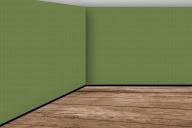Leaving empty spaces in your living room interior can be a deliberate and beneficial design choice.
Empty spaces, also known as negative space or white space, refer to areas in a room that are intentionally left unoccupied by furniture, decor, or other elements.
Incorporating empty spaces in your living room can have several advantages.
Visual Rest
Empty spaces provide visual rest to the eyes, creating a sense of balance and tranquility in the room.
They give the eyes a chance to breathe and prevent the living room from feeling cluttered or overwhelming.

Highlighting Focal Points
Empty spaces draw attention to the key focal points in the room, such as a beautiful piece of artwork, an elegant piece of furniture, or a stunning architectural feature.
By allowing these elements to stand out, the room's design can be more impactful.
Aesthetic Appeal
Well-planned empty spaces can add a sense of elegance and sophistication to the living room.
They give the room an open and airy feel, making it appear more spacious and inviting.
Flow and Movement
Leaving empty spaces can help improve the flow and movement within the room.
It allows for easy navigation and prevents furniture and decor from obstructing the pathways.
Flexibility and Adaptability
Empty spaces offer flexibility in terms of rearranging furniture or adding new decor elements in the future.
It gives you room to make changes without overwhelming the space.









